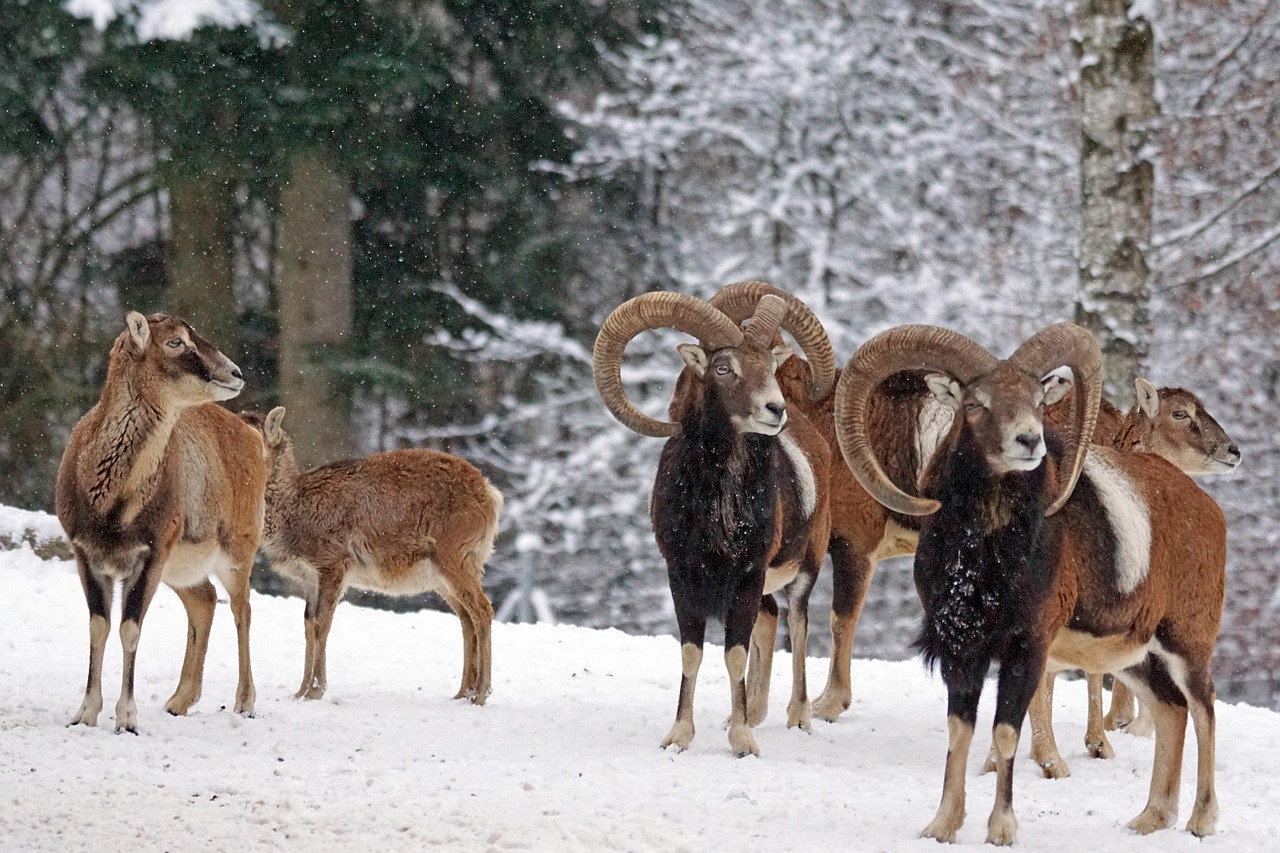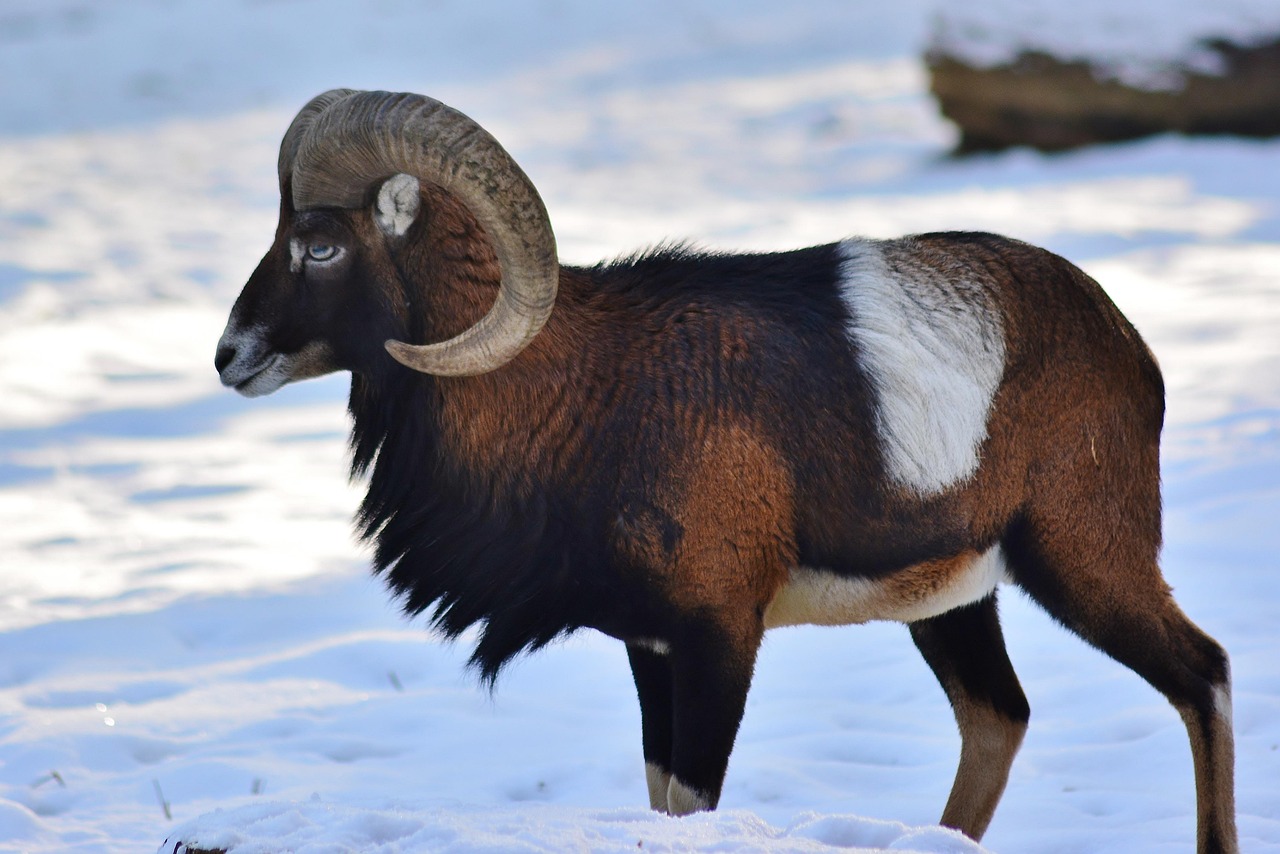Mouflon


Characteristics:
The mouflon is a wild sheep species with a compact body and short, dense coat. It measures 110–130 cm in length and stands about 65–75 cm high at the shoulder. The coat is reddish-brown to dark brown with a light saddle patch across the back, especially visible in males. The male (ram) has large, spiral-shaped horns that can grow up to 80 cm long. The female (ewe) is smaller and has small horns or none at all.
Distribution:
The mouflon originates from southern Europe, mainly Corsica and Sardinia, but has been introduced to several European countries. In Sweden, mouflon are found mainly in the southern regions, often in game enclosures but also as free-ranging populations in certain areas. They prefer hilly terrain with forests, meadows, and rocky slopes.
Diet:
Mouflon feed on grasses, herbs, leaves, shoots, and bark, and sometimes on agricultural crops when available. During winter, they also browse on shrubs and twigs.
Young:
The ewe usually gives birth to one or two lambs during April–May. The lambs are brown and start following their mother shortly after birth.
Rut:
The rutting season occurs in October–November. During this time, rams fight by butting heads to gain access to the ewes.
Calls:
Mouflon are generally quiet animals, but rams may grunt or snort during the rut. Lambs bleat to stay in contact with their mothers.
Tracks:
Mouflon tracks are small and pointed, similar to domestic sheep tracks, about 4–6 cm long. In snow or soft ground, the movements of the whole flock can often be seen together.
Hunting:
Mouflon are hunted in autumn, mainly through stalking or driven hunts. They are alert and agile animals that often seek shelter in forests or on rocky hillsides.
Weapon Class:
Hunting mouflon requires a Class 1 rifle, meaning ammunition with at least 2,700 joules of energy at 100 meters.
